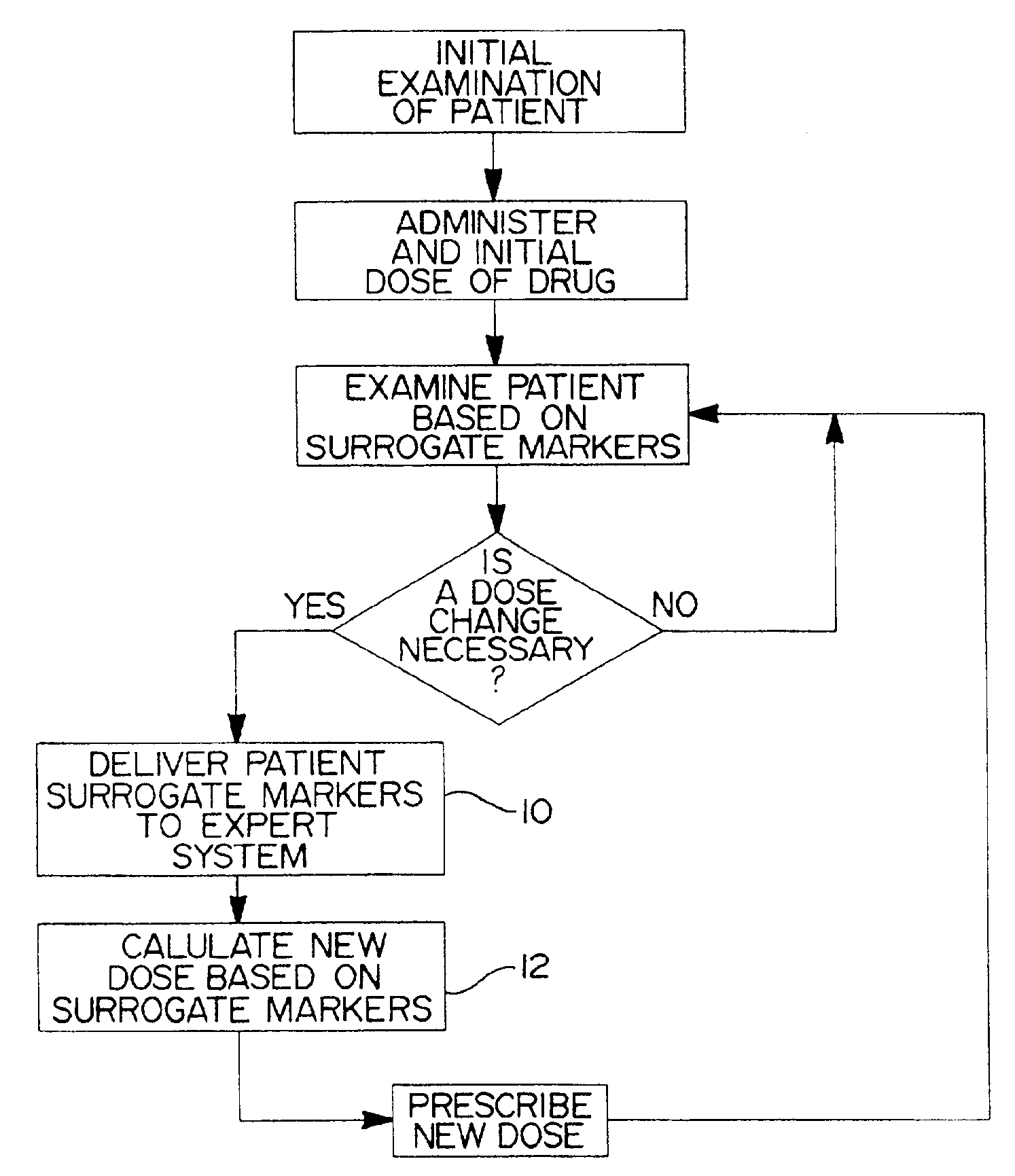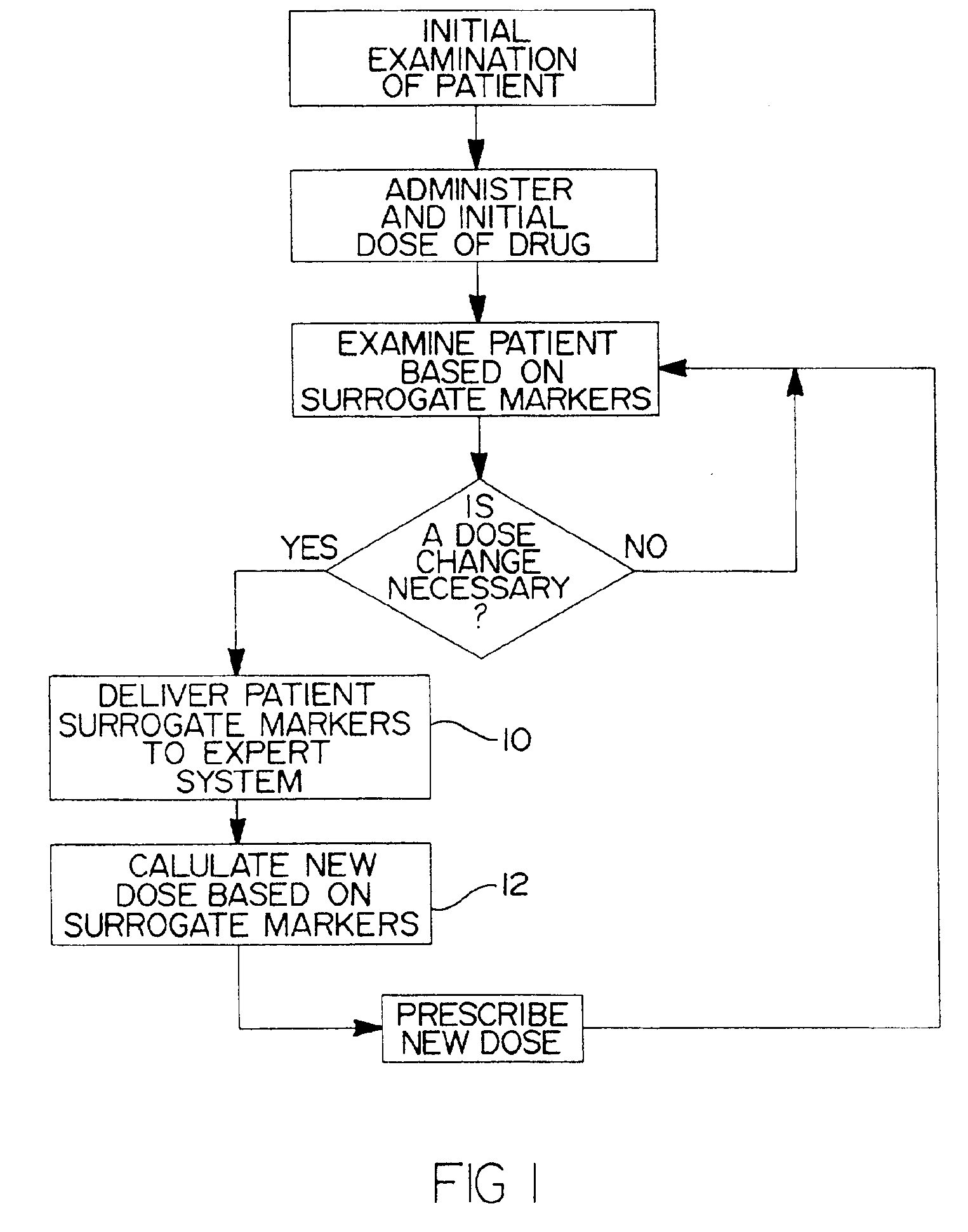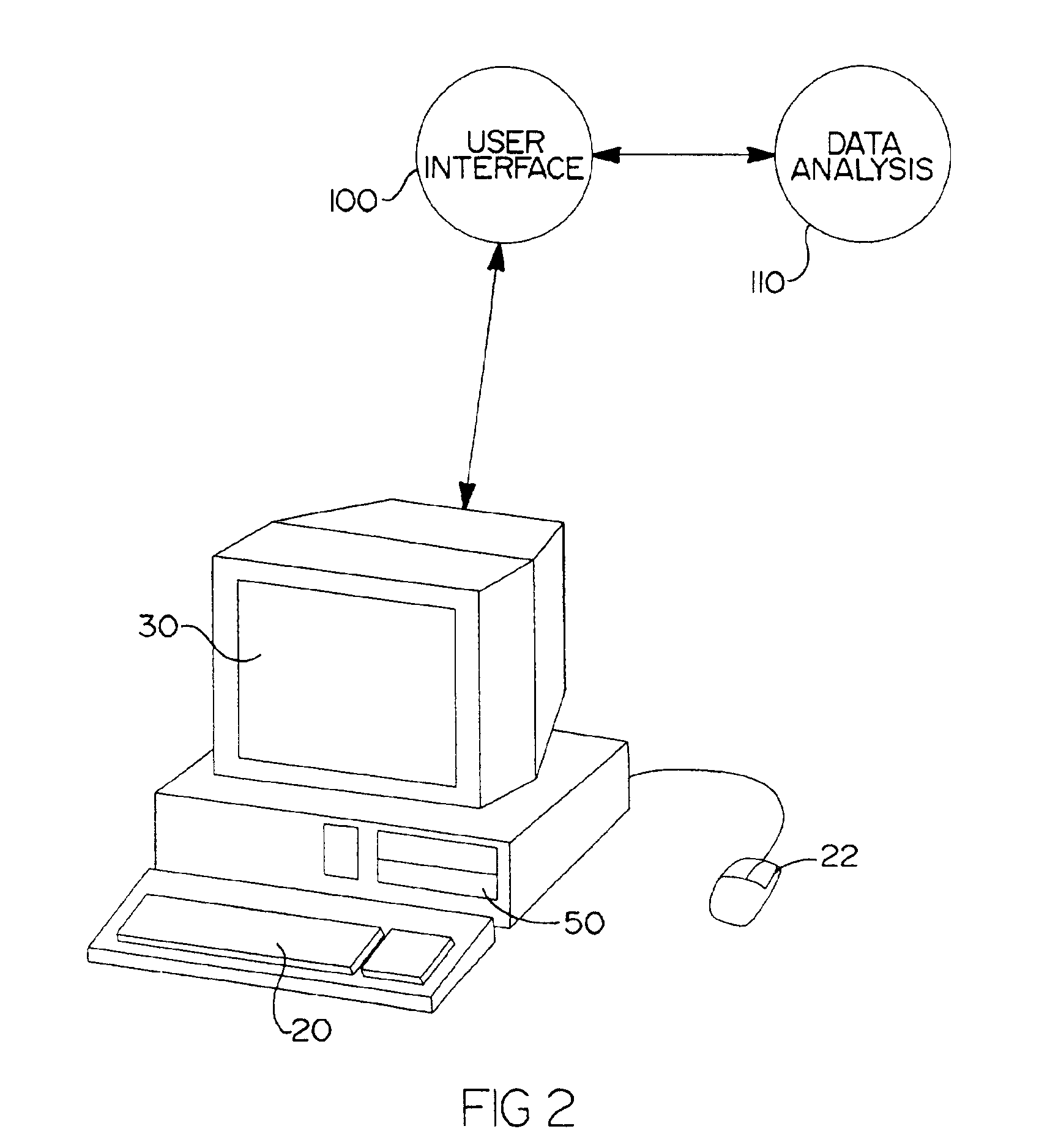Method and system for use in treating a patient with an anticoagulant to optimize therapy and prevent an adverse drug response
- Summary
- Abstract
- Description
- Claims
- Application Information
AI Technical Summary
Benefits of technology
Problems solved by technology
Method used
Image
Examples
embodiment
Percentage Surrogate Markers Embodiment
[0032]In this preferred embodiment, a physician prescribes an anticoagulant for a patient based on the FDA recommended dose on the label of the anticoagulant The physician then re-evaluates the patient, usually daily, either in person or remotely depending on the agent being prescribed. During the subsequent evaluations by the physician, the surrogate markers are monitored and sequentially compared to determine if there are any toxicities associated with the anticoagulant. Also the surrogate markers are evaluated to see if the desired effect of the anticoagulant is being achieved. Based on this evaluation by the physician, the current anticoagulant dose, and the percent response of the patient to the last dosing based on a surrogate marker are then input into the system and the new anticoagulant dose is calculated based on the equation:
NAD=CAD−{[PAR−100) / PAR> / <1+(CAD / HIGH)>]×CAD}+LV
where:
[0033]LV={(RESPONSE×CAD)×[(100−RES)×0.01]} / 1.3^(CAD...
PUM
 Login to View More
Login to View More Abstract
Description
Claims
Application Information
 Login to View More
Login to View More - R&D
- Intellectual Property
- Life Sciences
- Materials
- Tech Scout
- Unparalleled Data Quality
- Higher Quality Content
- 60% Fewer Hallucinations
Browse by: Latest US Patents, China's latest patents, Technical Efficacy Thesaurus, Application Domain, Technology Topic, Popular Technical Reports.
© 2025 PatSnap. All rights reserved.Legal|Privacy policy|Modern Slavery Act Transparency Statement|Sitemap|About US| Contact US: help@patsnap.com



